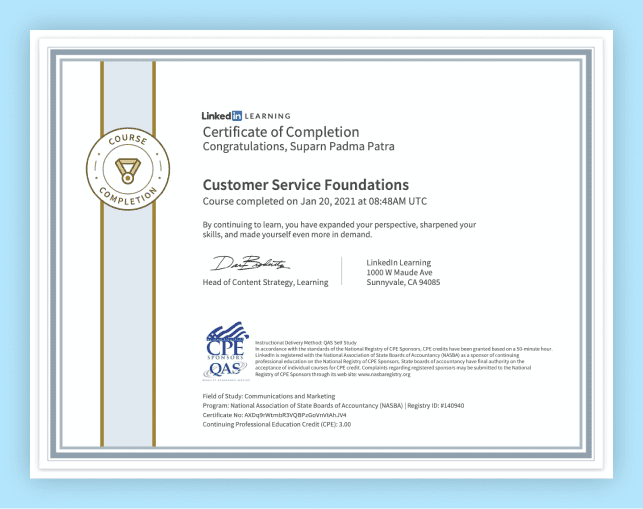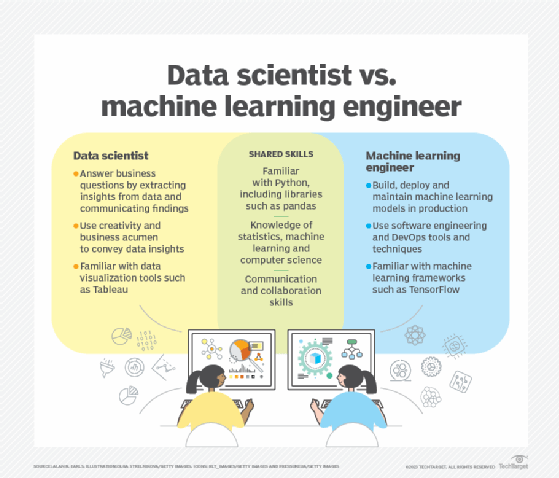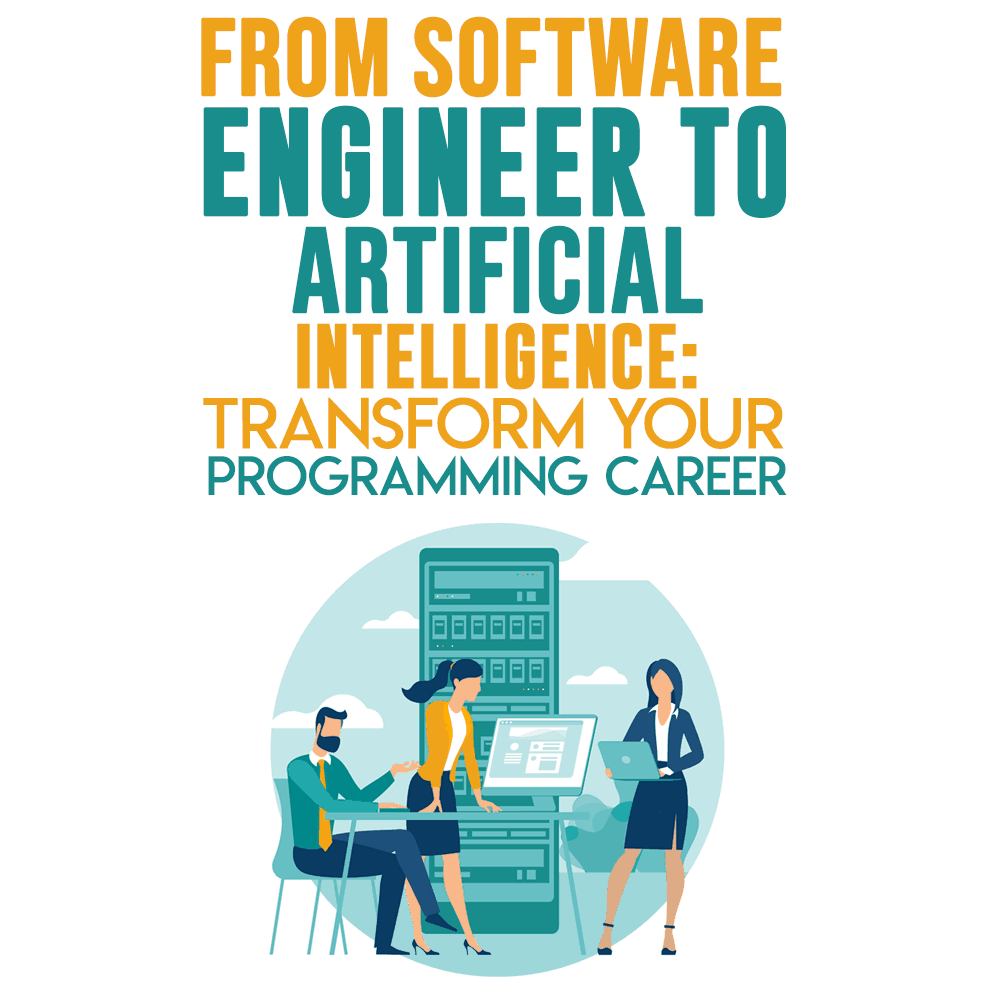All Categories
Featured
Table of Contents
- – Getting The Top Machine Learning Courses Onlin...
- – Not known Details About No Code Ai And Machine...
- – Rumored Buzz on 🔥 Machine Learning Engineer ...
- – What Does No Code Ai And Machine Learning: Bu...
- – Some Of Aws Certified Machine Learning Engin...
- – The Of Machine Learning Online Course - Appl...
- – The 15-Second Trick For Software Engineering...
Some people believe that that's cheating. If somebody else did it, I'm going to utilize what that person did. I'm requiring myself to believe via the possible solutions.
Dig a little bit deeper in the math at the beginning, so I can develop that foundation. Santiago: Finally, lesson number seven. This is a quote. It states "You have to understand every detail of an algorithm if you wish to utilize it." And after that I say, "I think this is bullshit suggestions." I do not believe that you have to understand the nuts and screws of every algorithm before you utilize it.
I would have to go and inspect back to in fact obtain a far better instinct. That does not mean that I can not fix points using neural networks? It goes back to our sorting example I assume that's just bullshit advice.
As an engineer, I've worked with several, numerous systems and I've utilized numerous, lots of points that I do not recognize the nuts and bolts of just how it works, even though I comprehend the impact that they have. That's the last lesson on that particular string. Alexey: The funny point is when I think of all these libraries like Scikit-Learn the algorithms they make use of inside to execute, as an example, logistic regression or another thing, are not the very same as the algorithms we study in maker understanding courses.
Getting The Top Machine Learning Courses Online To Work
Even if we attempted to find out to obtain all these essentials of device knowing, at the end, the formulas that these collections make use of are various. Santiago: Yeah, definitely. I believe we require a lot much more materialism in the industry.

By the means, there are two different paths. I typically talk with those that want to work in the industry that desire to have their influence there. There is a course for researchers and that is entirely various. I do not attempt to speak about that due to the fact that I don't know.
Right there outside, in the sector, pragmatism goes a lengthy way for sure. (32:13) Alexey: We had a remark that stated "Really feels even more like inspirational speech than speaking about transitioning." So maybe we need to change. (32:40) Santiago: There you go, yeah. (32:48) Alexey: It is a good motivational speech.
Not known Details About No Code Ai And Machine Learning: Building Data Science ...
One of the points I wanted to ask you. First, let's cover a couple of points. Alexey: Let's begin with core tools and frameworks that you require to find out to really shift.
I recognize Java. I understand how to utilize Git. Possibly I understand Docker.
Santiago: Yeah, absolutely. I believe, number one, you need to begin finding out a little bit of Python. Because you currently know Java, I do not assume it's going to be a big transition for you.
Not because Python coincides as Java, but in a week, you're gon na obtain a lot of the differences there. You're gon na have the ability to make some development. That's leading. (33:47) Santiago: After that you obtain particular core tools that are going to be made use of throughout your whole profession.
Rumored Buzz on 🔥 Machine Learning Engineer Course For 2023 - Learn ...
You obtain SciKit Learn for the collection of equipment discovering algorithms. Those are devices that you're going to have to be utilizing. I do not advise just going and finding out regarding them out of the blue.
We can speak about specific courses later on. Take among those courses that are going to start presenting you to some troubles and to some core ideas of artificial intelligence. Santiago: There is a course in Kaggle which is an intro. I do not remember the name, yet if you go to Kaggle, they have tutorials there completely free.
What's good concerning it is that the only demand for you is to understand Python. They're mosting likely to present a trouble and inform you how to make use of choice trees to resolve that details problem. I think that procedure is extremely powerful, due to the fact that you go from no equipment discovering history, to recognizing what the problem is and why you can not resolve it with what you understand right currently, which is straight software program engineering practices.
What Does No Code Ai And Machine Learning: Building Data Science ... Mean?
On the various other hand, ML engineers specialize in structure and releasing machine learning models. They concentrate on training versions with data to make predictions or automate jobs. While there is overlap, AI engineers handle more varied AI applications, while ML designers have a narrower concentrate on artificial intelligence algorithms and their practical implementation.

Equipment understanding designers focus on creating and deploying artificial intelligence models right into manufacturing systems. They deal with engineering, ensuring versions are scalable, reliable, and integrated right into applications. On the various other hand, data researchers have a more comprehensive role that consists of information collection, cleaning, exploration, and building models. They are commonly accountable for drawing out understandings and making data-driven choices.
As organizations increasingly adopt AI and machine understanding innovations, the need for proficient professionals grows. Device understanding engineers work on sophisticated jobs, contribute to technology, and have affordable wages.
ML is basically various from standard software advancement as it focuses on mentor computers to find out from data, rather than programs specific rules that are carried out methodically. Unpredictability of end results: You are most likely utilized to writing code with predictable outcomes, whether your function runs as soon as or a thousand times. In ML, nevertheless, the end results are less particular.

Pre-training and fine-tuning: Just how these versions are trained on large datasets and afterwards fine-tuned for certain tasks. Applications of LLMs: Such as text generation, view analysis and info search and retrieval. Papers like "Interest is All You Required" by Vaswani et al., which introduced transformers. On-line tutorials and training courses focusing on NLP and transformers, such as the Hugging Face course on transformers.
Some Of Aws Certified Machine Learning Engineer – Associate
The capacity to take care of codebases, combine modifications, and solve problems is equally as essential in ML development as it is in typical software application jobs. The abilities developed in debugging and testing software application applications are highly transferable. While the context might alter from debugging application logic to identifying problems in data handling or model training the underlying concepts of systematic investigation, theory testing, and iterative refinement coincide.
Maker understanding, at its core, is greatly dependent on stats and probability theory. These are critical for comprehending exactly how algorithms learn from information, make forecasts, and review their efficiency.
For those curious about LLMs, an extensive understanding of deep discovering designs is useful. This consists of not only the auto mechanics of neural networks however likewise the design of specific models for different use situations, like CNNs (Convolutional Neural Networks) for image processing and RNNs (Persistent Neural Networks) and transformers for sequential information and all-natural language processing.
You need to understand these concerns and find out methods for determining, alleviating, and communicating about prejudice in ML designs. This consists of the possible impact of automated choices and the moral ramifications. Several designs, particularly LLMs, call for considerable computational sources that are often offered by cloud systems like AWS, Google Cloud, and Azure.
Building these abilities will certainly not just promote an effective shift into ML but additionally make certain that designers can add properly and sensibly to the development of this dynamic field. Theory is vital, yet absolutely nothing defeats hands-on experience. Start dealing with projects that allow you to use what you have actually found out in a useful context.
Take part in competitors: Sign up with platforms like Kaggle to join NLP competitors. Develop your jobs: Begin with simple applications, such as a chatbot or a text summarization device, and slowly raise complexity. The field of ML and LLMs is rapidly advancing, with new innovations and modern technologies arising routinely. Remaining upgraded with the most up to date research study and patterns is crucial.
The Of Machine Learning Online Course - Applied Machine Learning
Join neighborhoods and discussion forums, such as Reddit's r/MachineLearning or neighborhood Slack networks, to discuss ideas and obtain recommendations. Participate in workshops, meetups, and meetings to get in touch with other specialists in the area. Contribute to open-source tasks or write blog site articles concerning your understanding trip and jobs. As you obtain knowledge, begin looking for possibilities to include ML and LLMs right into your job, or look for brand-new roles concentrated on these technologies.

Potential usage cases in interactive software application, such as referral systems and automated decision-making. Recognizing unpredictability, fundamental analytical procedures, and probability circulations. Vectors, matrices, and their role in ML algorithms. Error minimization techniques and slope descent explained merely. Terms like version, dataset, features, tags, training, inference, and validation. Information collection, preprocessing methods, version training, evaluation processes, and deployment considerations.
Decision Trees and Random Forests: Instinctive and interpretable versions. Assistance Vector Machines: Optimum margin category. Matching problem kinds with proper versions. Stabilizing efficiency and complexity. Basic structure of neural networks: nerve cells, layers, activation features. Layered calculation and forward proliferation. Feedforward Networks, Convolutional Neural Networks (CNNs), Recurrent Neural Networks (RNNs). Image recognition, series forecast, and time-series analysis.
Information flow, transformation, and feature engineering methods. Scalability concepts and efficiency optimization. API-driven methods and microservices combination. Latency monitoring, scalability, and version control. Continual Integration/Continuous Release (CI/CD) for ML process. Design tracking, versioning, and performance monitoring. Spotting and dealing with changes in version performance over time. Dealing with efficiency bottlenecks and source administration.
The 15-Second Trick For Software Engineering In The Age Of Ai

You'll be presented to three of the most pertinent parts of the AI/ML technique; monitored learning, neural networks, and deep discovering. You'll realize the differences in between traditional shows and machine understanding by hands-on growth in supervised discovering before building out complicated dispersed applications with neural networks.
This program works as a guide to equipment lear ... Program Extra.
Table of Contents
- – Getting The Top Machine Learning Courses Onlin...
- – Not known Details About No Code Ai And Machine...
- – Rumored Buzz on 🔥 Machine Learning Engineer ...
- – What Does No Code Ai And Machine Learning: Bu...
- – Some Of Aws Certified Machine Learning Engin...
- – The Of Machine Learning Online Course - Appl...
- – The 15-Second Trick For Software Engineering...
Latest Posts
Mock Data Science Interviews – How To Get Real Practice
How To Get Free Faang Interview Coaching & Mentorship
Best Ai & Machine Learning Courses For Faang Interviews
More
Latest Posts
Mock Data Science Interviews – How To Get Real Practice
How To Get Free Faang Interview Coaching & Mentorship
Best Ai & Machine Learning Courses For Faang Interviews